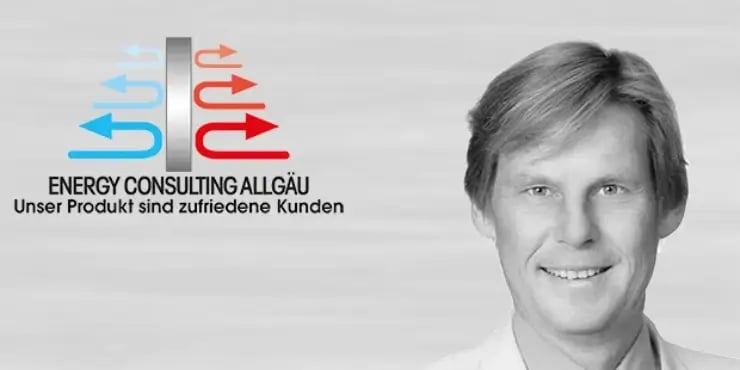Who is Energy Consulting Allgäu?
Our focus is to consult manufacturing and trade companies in matters of energy, material, and resource efficiency. We support customers in the introduction of various management systems. All our discussions are conducted without any ideology and with the main purpose to increase cost efficiency in the company.
You often emphasize in your presentations that energy efficiency and material efficiency cannot be viewed separately. What experiences in industry brought you to this conclusion?
When we are looking for the main energy consumers, we have increasingly included the material flow in our calculations due to a lack of data. We realized very early that energy optimization can also be achieved by an increase in material efficiency. We have recognized and used this information long before the introduction of management systems such as ISO 50001 which require kWh per unit as a key indicator.
What are the biggest challenges that you and the Energy Consulting Allgäu team encounter in operational practice?
The effectiveness of our work is critically dependent on the data available. Important parameters are often not systematically collected by companies or scattered in various departments. To systematically collect, organize, and evaluate this data, is one of our core competencies. From this data, we can have a detailed look into the manufacturing processes. The software for material flow analysis called Umberto provides valuable assistance in the optimization of production processes through systematization of process flows and cost calculation at each individual process step.
How does the transition from energy management to material efficiency work specifically? Can you maybe explain this on the basis of a real project?
Let’s take the optimization of an industrial cooker as an example, which we carried out as part of an energy consulting project for a pasta manufacturer. We had to consistently include the material flows of raw materials and supplies into the energy calculations, in order to be able to allocate the energy flows within the facility. This immediately sparked ideas for increasing energy and material efficiency, which we then implemented in a separate project, resulting in significant cost savings.
What are the biggest and most surprising savings that you have ever found?
One of the most interesting projects was the energy and material flow analysis of a loop process in a chemical company. We determined that the process was so costly that a mid six figures Euro savings could be achieved by shutting down the process and sourcing the raw material directly on the market. Since this was a very energy-intensive process, the entire company’s energy-economic strategy will be inspected in the future.
Are there funding opportunities as well?
I know that at least in Europe there are many country-specific funding opportunities for energy and material efficiency projects. The choice of funding is highly dependent upon the individual circumstances of the company. General statements on this subject are not possible. If funding is of interest for a company, then we are researching these opportunities for the specific project. Mostly the identified potentials and optimization measures pay off even without government funding.
Thanks Matthias!




.png)

